Creating a Vision For A Photo
I am currently preparing for my annual photography workshop in Paris. This means I am finalizing my rooming list, checking on the flights for attendees, and having my calls with my local guides and models.
This is the kind of preparation that goes into each tour... and the fun part for me is starting to wrap my mind around the photoshoots that I want to have during our week. I want to explore some old haunts and identify some new locations. I start by reviewing past images and creating a shot list of images I want to look out for while in Paris.
Preparing for the Paris workshop always makes me laugh. I immediately think about something my partner at Akari Photo Tours always says, "The least cultured person he knows runs the most cultured trip we offer." And, while there is some truth in that, I think the quality of photos we take in Paris comes from a couple of things. (1) My process of allowing those who have photographed the city before me to give me inspiration. I then determine how to apply my own spin on their photos, (2) planning and researching and using local guides to put me in the right spot at the right time, and (3) the city itself.
Paris, often dubbed "The City of Light and Love," is a haven for photographers due to its unparalleled blend of historical grandeur, architectural splendour, and vibrant street life. The city's iconic landmarks, such as the Eiffel Tower, Notre Dame Cathedral, and the Louvre Museum, offer a timeless appeal and provide photographers with countless opportunities to capture the essence of Parisian beauty day and night. The elegance of these structures, coupled with the rich history they embody, allows photographers to create images that are not only visually striking but also deeply evocative of the city's storied past.
The diverse neighbourhoods of Paris each present a unique character and atmosphere, making the city a versatile canvas for photographic exploration. From the bohemian charm of Montmartre, with its narrow winding streets and artistic heritage, to the modernity of La Défense with its futuristic skyscrapers, Regardless of the district, Paris offers a myriad of settings that cater to various photographic styles and interests.
Moreover, Paris is renowned for its vibrant street life, which offers a treasure trove of candid photographic moments for the patient photographer. The bustling cafés, markets, and parks are teeming with locals and tourists alike, providing ample opportunities to capture the daily rhythms and unique character of Parisian life.
This eclectic mix of photographic opportunities makes Paris not only a subject for beautiful photographs but also a source of endless inspiration for photographers looking to tell compelling visual stories… and if you know me, you know I appreciate telling a good story with a photograph when the opportunity presents itself.
Below is a gallery of some of my favourite images from my time in Paris. The same images I keep in a folder while I am in Paris. I will scroll through these images every morning over coffee so they are fresh in my mind when I am wandering through the city with my camera.



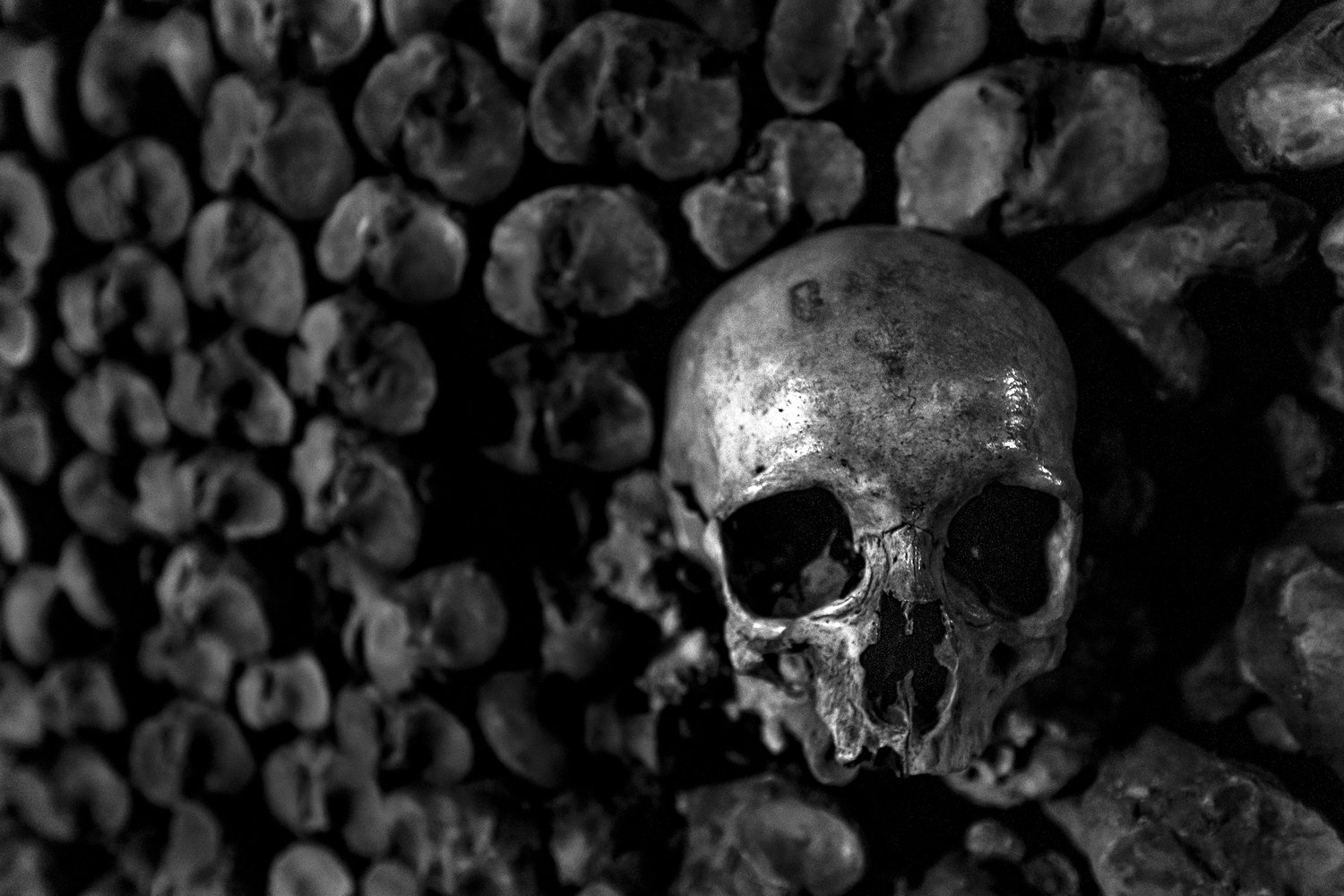
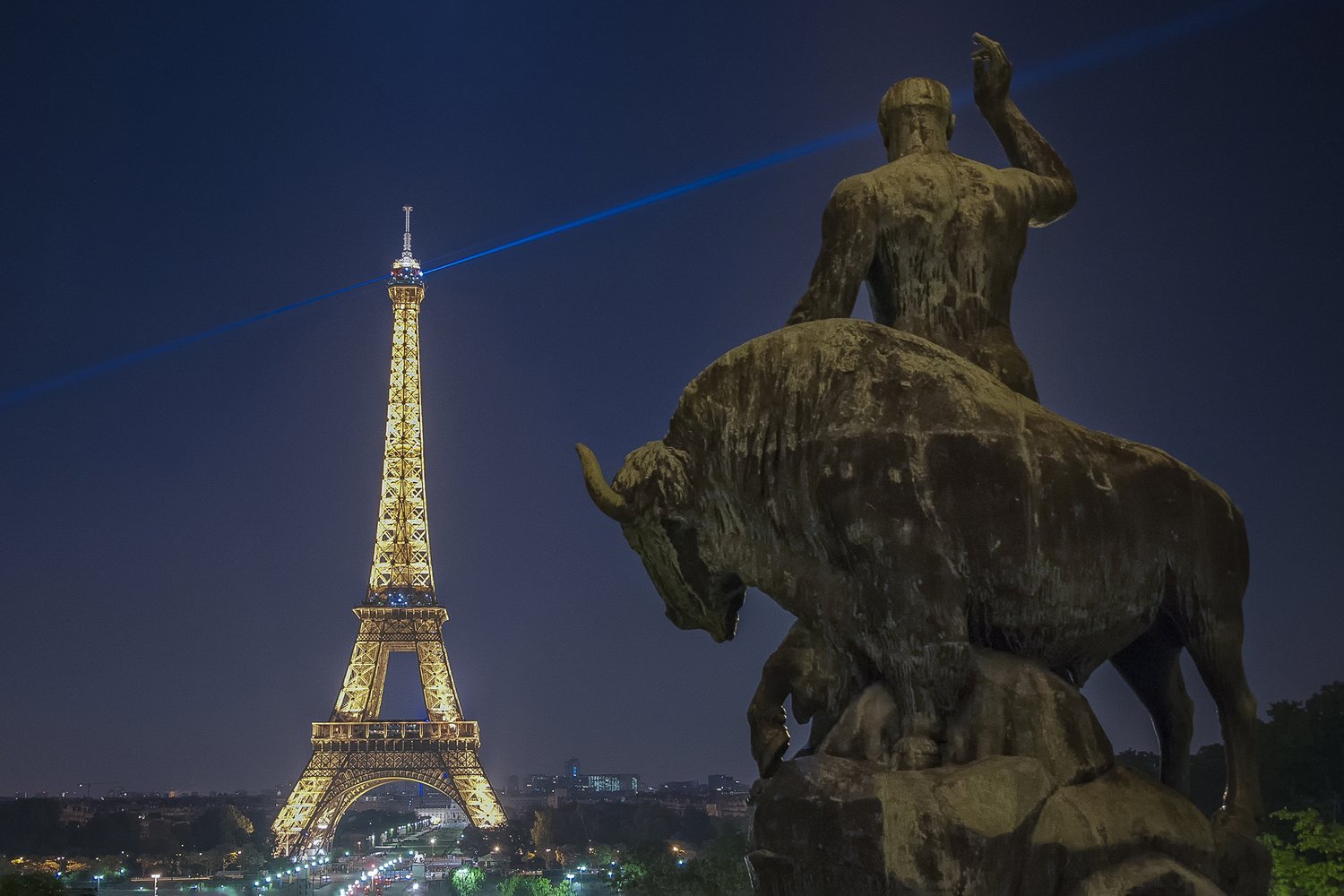
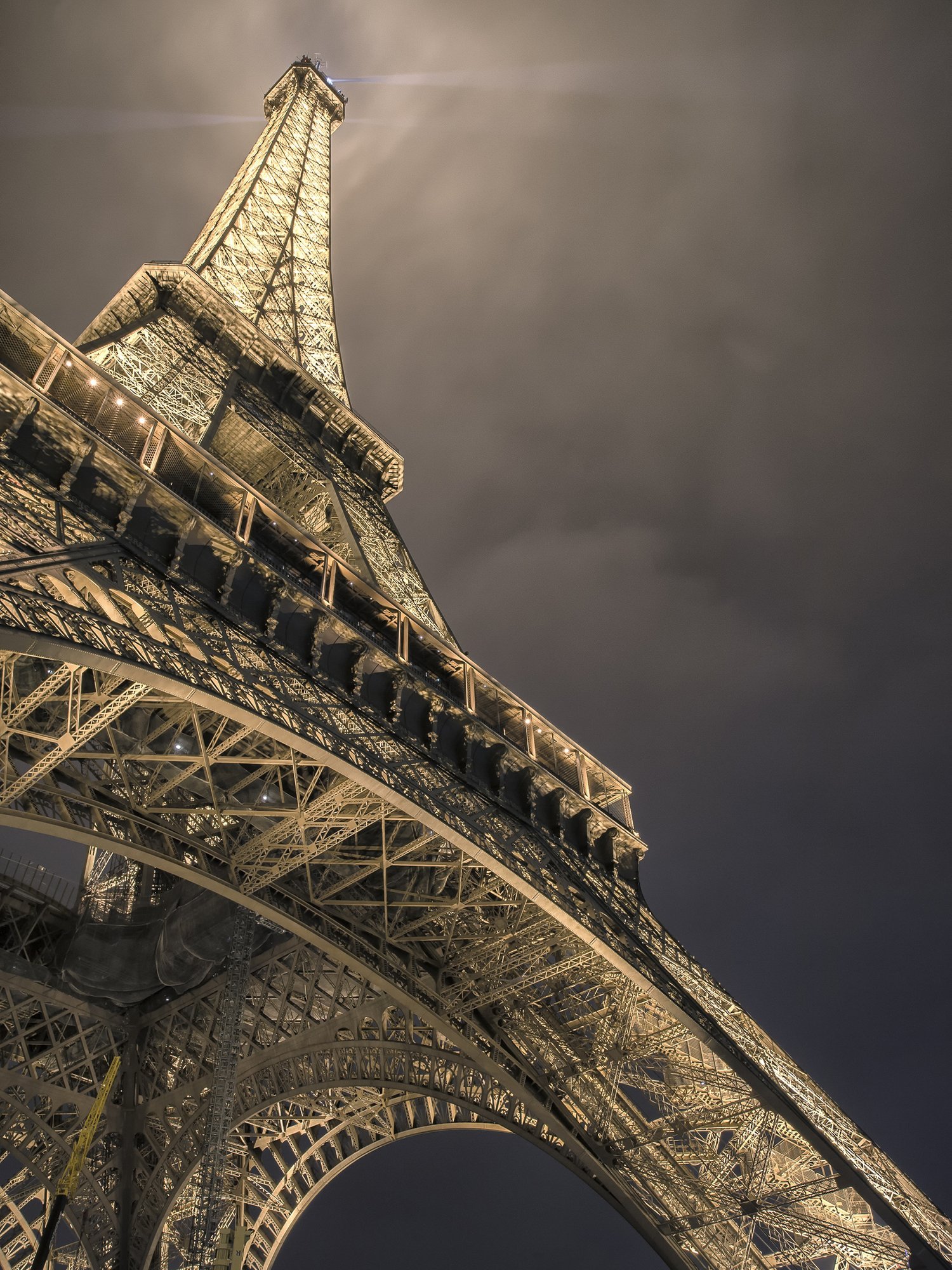




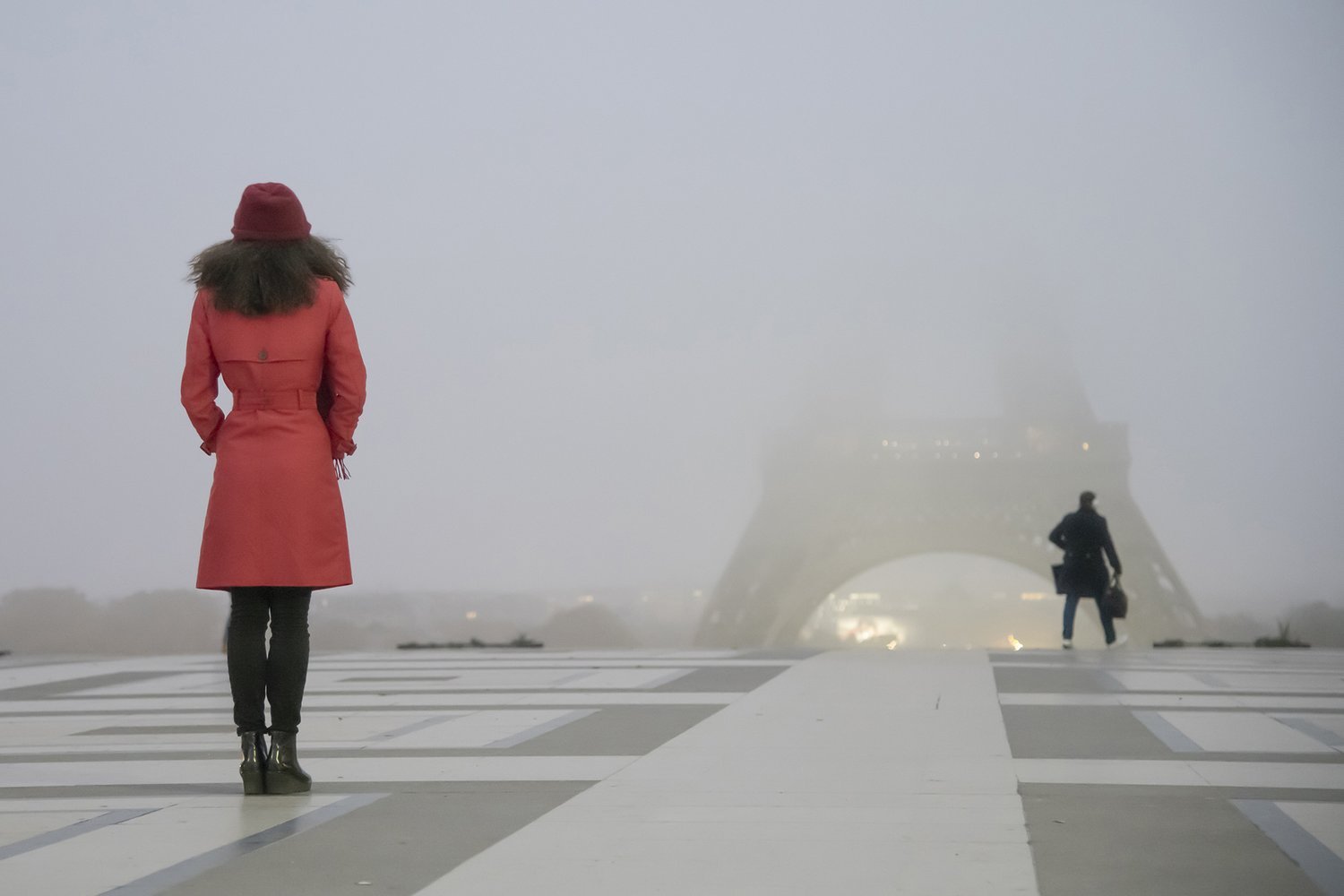


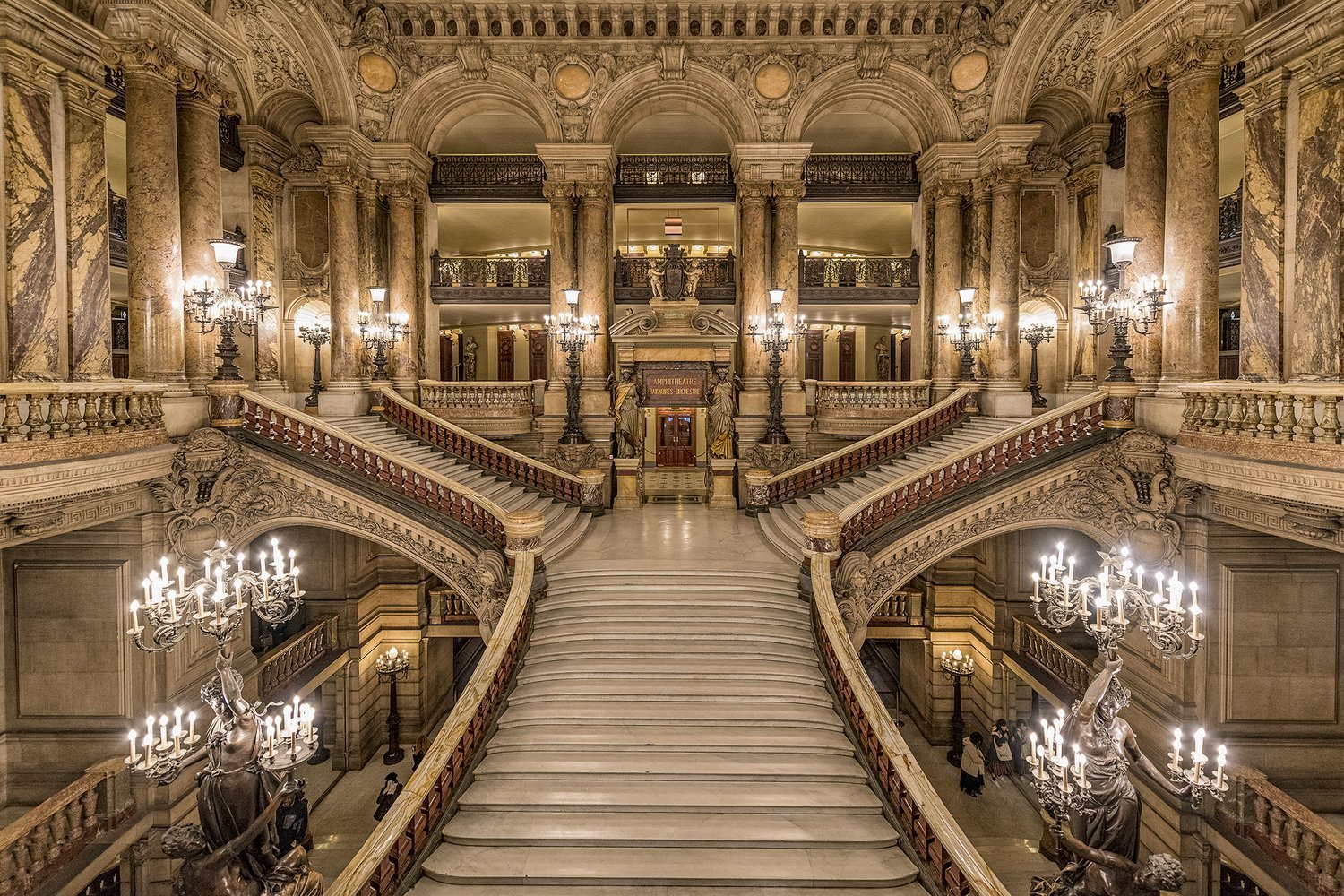


As you can see, I love to photograph the city both above ground, and below. I appreciate the timeless beauty of the architecture, I love to capture Parisiens going about their daily lives, and, as I previously mentioned, I like to be inspired by photographers who have come before me.
Elliott Erwitt — Paris, France (umbrella jump)
One of these photographers who inspires my Parisien work is Elliott Erwitt. Mr. Erwitt is renowned for his candid and often humorous style of street photography, particularly in Paris. His work is characterized by a keen eye for the absurd and the whimsical aspects of everyday life. Erwitt's Paris photographs capture the city's charm and idiosyncrasies through moments that might otherwise go unnoticed. His images often highlight the humour, irony, and tender human interactions that occur in public spaces, making his work both relatable and deeply engaging.
Erwitt's Parisian photographs are celebrated for their spontaneity and emotional resonance. He has an exceptional ability to capture fleeting, poignant moments with a touch of wit, whether it be through the interactions of people, the behaviours of animals, or the interplay of light and shadows on the city's streets. His black-and-white photography, with its emphasis on contrast and composition, enhances the timeless quality of Paris, allowing viewers to connect with the essence of the city's daily life.
The photo above is just one of his whimsical photos that I have often admired and wanted to put my own spin on. And I believe I have achieved this in the two photos that you see below. And these photos are the subject of this blog post.
Classic black and white image of a modern dancer performing in front of the Eiffel Tower.
An image taken on the Trocadero of two style of dancers. The dancer on the right using strong, masculine, straight lines. The dancer on the right showing a fluid motion to convey beauty.
Why Did I Take THESE Photos of The Dancers?
The short answer is that they are both inspired by Elliott Erwitt. I own some of his photo books, and I admire his ability to capture images of iconic buildings with the introduction of an unexpected element.
In regards to the black and white image, I had a whole sequence of photos where the dancer was jumping. Towards me, he then did a running jump from side to side…. Then he jumped up and created those straight lines with his limbs. That was the one I liked. Then I asked him to release the umbrella at the height of his jump… BAM! That was the image for me. The separation gave me three distinct elements. The umbrella, the tower and the dancer. Once I had the photo I wanted, I did not bother to ask for anything else. The straight lines in the body and the hand reaching to the sky all mimicked the iconic Eiffel Tower.
In regards to the colour image with the two dancers, I had them both separately dancing with the tower. I noticed a juxtaposition between the two styles of dance as I went through the images. What if I introduced both dancers into one photo? I asked Sanchit, the male dancer, to keep his strong, masculine lines. I then asked India, the ballerina, to give me a soft, feminine look that showed off her beauty and grace. His dark, straight lines came out opposite to her feminine red curves. By having them flank the tower, it created a beautiful combination of three distinct elements in a geometrical pattern. But something was missing… I forgot about the umbrella. It took multiple times to capture the umbrella where I wanted it. But patience paid off, and the geometrical pattern was complete. And my inspiring photo by Elliott Erwitt was captured, captured in my own distinct way.
What Camera Settings Did I Use To Take These Photos?
Black and White Male Dancer
Camera: Nikon Z9
Lens: Nikkor 24-70mm F/4
Aperture: F/5.6
Shutter Speed: 1/400th of a second
ISO: 1600
Metering: I spot-metered off the dancer to make sure he was just slightly overexposed and the background would be totally blown out.
Exposure Compensation: +1.0
Male and Female Dancers
Camera: Nikon Z9
Lens: Nikkor 24-70mm F/4
Aperture: F/4.0
Shutter Speed: 1/320th of a second
Metering: I spot-metered off the male dancer to make sure he was just slightly overexposed and the background would be totally blown out.
ISO: 1600
Exposure Compensation: +1.0
Why Did I Use These Settings?
I create these high key images using manual mode. When you switch to manual mode, it’s like taking the reins of a wild stallion – you have complete control over the exposure, and creating a high-key photograph becomes a piece of cake. Picture yourself as the wizard of light and shadow, tweaking your shutter speed, aperture, and ISO like a maestro conducting an orchestra. By cranking things up a notch to slightly overexpose your shot, you’re more likely to end up with a high-key masterpiece. Shadows will lose their gloom and doom, while the bright areas will sparkle like a diamond in a glitter factory.
Nailing high-key photography is all about outshining your subject with a background that’s lighter than a marshmallow in a snowstorm. But don’t forget – your star subject still needs to be perfectly exposed, like a movie star in the spotlight. Here’s a sneaky lighting hack for you: capture that dreamy, high-key effect by heading outdoors on a cloudy, overcast day. It’s like having nature’s softbox right at your fingertips, turning the sky into your very own lighting assistant.
Post-Processing
After capturing the high-key photographs, you may need to do some post-processing to enhance the final result. These adjustments would be the following;
Adjusting the exposure and brightness levels to achieve the desired high-key effect.
Increasing the contrast to make the subject or model stand out from the brighter background.
Removing any distractions or imperfections in the background. A minimalist look is important to create a compelling image.
Try converting the image to black and white for a classic, high-key look if that is something you prefer.
Conclusion
You don’t have to visit a location like I do for two decades. But you should be doing the same kind of research I do before you visit a city like Paris. Here are the simple steps that I would suggest you do to plan both your vacation and your photoshoots.
Find accommodations that will give you the amenities and access to the photography locations that you want to capture. There is nothing more frustrating than spending so much time in a car, subway or Uber to get to the locations you want to photograph.
Do some online research by searching for photos of the locations you want to photograph. Find your inspiration photos… those photos you want to take for yourself. I will look at the sun and moon times at my locations; I will look at when the best day is to visit the location for minimum tourist levels; and, in the case of city photography, I will look at Google Maps to look at the street views.
I create a shot list of images. I place them on my smartphone, so I have them with me at all times. As I mentioned earlier, I review them every morning, so they are fresh in my mind.
Learn how to get the most out of your camera. Understand the settings you can use in your camera while taking photos to get you as close to the refinished photo as you can. See the settings I used in my camera to create images that were easier to create the high-key look in post-processing. Practice this at home before you are on vacation.
Keep an open mind while you are on location. Do not just look for the photos on your smartphone. Watch for the opportunities that present themselves.
I hope this post helps you consider doing some more planning before your trip. And I hoped it helps you learn how to achieve a high key look.
Why don’t you consider joining me in Paris one of these years? You can see these tours here.



